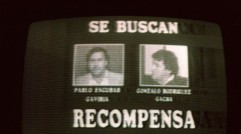Missing Guerrero, Mexico Students Protests and Massacre: Protesters Bomb Mexican Coca-Cola Company Office, Kidnap Employees
Last Wednesday an attempt to attack the Coca-Cola company’s offices in the southern state of Guerrero, Mexico, left 10 people injured.
According to The Guardian, the Guerrero state government said the violence in Chilpancingo was tied to protesters who sought to attack the soft drink offices in order “to damage the facilities.”Demonstrators protesting the Sept. 26, 2014, disappearance of 43 Teachers' College students had hijacked Coca-Cola delivery trucks and stolen merchandise. The company filed a complaint about the thefts resulting in the arrest of some protesters.
The group of demonstrators, which included Teachers’ College students and unionized teachers, tossed gasoline bombs that resulted in one state police officer being burned. Aside from this victim, three other policemen were injured, as were two reporters and four protesters.
Although the demonstrators took two company employees hostage, the company released a statement, saying, “Fortunately, our employees are well.” The company did not explain under what conditions the employees were released, but local media reported the two employees were exchanged for protesters who had been arrested earlier for taking Coca-Cola products from hijacked delivery trucks.
Coca-Cola FEMSA, the largest Coke bottling company in Mexico, has not confirmed that information.
“We are currently evaluating the viability of our operations, with the primary consideration being the safety of our personnel," the company said.
This is the second time Coca-Cola FEMSA has been attacked. Last August, after receiving threats before attackers burned four delivery trucks in an area known for gang battles, the company closed a distribution plant in Arceliao. According to Coca-Cola FEMSA, the threats were directed at the delivery personnel.
And their bottling competition has been in danger as well. In 2012, drug cartel Knights Templar burned five warehouses and dozens of vehicles owned by Sabritas snack company, a Mexican subsidiary of PepsiCo. The gang members believed Sabritas had allowed law-enforcement agents to use their trucks for surveillance purposes.
Subscribe to Latin Post!
Sign up for our free newsletter for the Latest coverage!
* This is a contributed article and this content does not necessarily represent the views of latinpost.com














